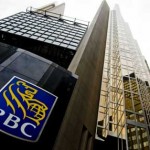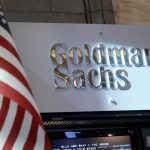Yesterday’s trade (in GMT terms) saw GBP/USD within the range of 1.2866-1.2946. The pair closed at 1.2880, losing 0.27% compared to Fridays close. It has been the 173rd drop in the past 316 trading days and also a third consecutive one. The daily low has been a level unseen since July 11th, when a low of 1.2851 was registered. The major pair has increased its decline to 2.67% so far during the current month, after losing 0.59% of its value in July.
At 6:33 GMT today GBP/USD was edging up 0.25% on the day to trade at 1.2912. The pair touched a daily high at 1.2928 during the late phase of the Asian trading session, overshooting the upper range breakout level (R4), and a daily low at 1.2878 during early Asian trade.
On Tuesday GBP/USD trading may be influenced by the following macroeconomic reports as listed below.
Fundamentals
United Kingdom
Consumer Price Index
The annual rate of inflation in the United Kingdom probably remained at 0.5% for a second straight month in July, according to the median estimate by experts. If so, it would be the 30th consecutive month, when annualized consumer prices remained below the 2-percent objective, set by the Bank of England.
In June, upward pressure to the general index of consumer prices came from cost of recreation and culture (up 0.8% year-on-year), restaurants and hotels (up 2.3%, following a 2.6% surge in May) and housing and utilities (up 0.1%, following a flat performance in May), according to the report by the Office for National Statistics.
On the other hand, in June downward pressure to the Consumer Price Index came from cost of transport (down 0.2% year-on-year after a 1.0% drop in May), and cost of food and beverages (down 2.9% year-on-year, or the largest drop so far in 2016).
The annualized core consumer price inflation probably decelerated to 1.3% in July, according to market expectations, from 1.4% in June. This indicator measures the change in prices of goods and services purchased by consumers, without taking into account volatile components such as food, energy products, alcohol and tobacco.
In case the annual CPI came in line with expectations or further approached the central bank’s inflation objective, this would have a strong bullish effect on the Sterling. The Office for National Statistics (ONS) will publish the official CPI report at 8:30 GMT.
United States
Consumer Price Index
The annualized consumer inflation in the United States probably decelerated to 0.9% in July, according to market expectations, from 1.0% in the preceding two months. If so, this would be the lowest annual inflation since March. In monthly terms, the Consumer Price Index (CPI) probably rose for a fifth consecutive month in July, going up 0.1%, according to the market consensus, following a 0.2% surge in the prior month.
In June, cost of food rose at an annual rate of 0.3%, slowing down from a 0.7% surge in May. It has been the lowest food inflation since March 2010. Cost of transportation services rose at a slower rate, 3% year-on-year in June, following a 3.2% increase in May, while cost of shelter went up 3.5% year-on-year, accelerating from 3.4% in May, and cost of medical care soared at an annual 3.8%, accelerating from 3.5% in May, according to the report by the Bureau of Labor Statistics. On the other hand, cost of energy fell 9.4% in June compared to the same month a year earlier, following a steeper (10.1%) slump in May.
The annualized core consumer inflation, which is stripped of prices of food and energy, probably remained stable at 2.3% in July, according to market expectations. It has been the highest annual core inflation since February.
If the general CPI tends to distance from the inflation objective, set by the Federal Reserve and considered as providing price stability, or a level below but close to 2%, this will usually reduce the appeal of the US dollar, as it lowers the probability of monetary policy tightening.
The Bureau of Labor Statistics is to release the official CPI report at 12:30 GMT.
Housing Starts and Building Permits
The number of housing starts in the United States probably fell 0.8% to 1.180 million units in July, according to market expectations, from the seasonally adjusted annual rate of 1.189 million during the prior month. The latter has been the highest number of starts since February, when a revised up level of 1.194 million was reported. In June, starts of single-family houses increased at a monthly rate of 4.4% to 778 000, while starts of buildings with five units or more rose 1.6% to reach 392 000, or a level unseen since September 2015. In June, housing starts marked the largest increase in the Northeast (46.3%), followed by starts in the West (17.4%). On the other hand, housing starts were lower in the Midwest (-5.2%) and in the South (-3.4%) during the same month.
Meanwhile, the number of building permits in the country probably went up 0.6% to 1.160 million in July from an annual level of 1.153 million in June. If expectations were met, this would be the highest level since February, when the revised up 1.177 million units were reported. Single-family authorizations rose at a monthly rate of 1.0% to reach 738 000 units in June, supported by the Northeast (+13.7%) and the West (+0.6%) regions, while permits of units in buildings with five units or more were reported to have increased 1.9% to 350 000.
In case a higher-than-anticipated figure for either of the two indicators is reported, this would have a moderate bullish effect on the US dollar. The official housing data are due out at 12:30 GMT.
Industrial Production
Industrial output in the United States probably rose for a second straight month in July, going up at a rate of 0.3%, according to market expectations. In June the index of production surged at a monthly rate of 0.6%, or the fastest since July 2015.
In June, output in the US mining sector rose 0.2%, as increases in the index for oil well drilling and servicing and the index for coal mining neutralized declines in the gauge for oil and gas extraction and that for non-metallic mineral mining.
The gauge for utilities registered a 2.4% monthly surge in June, as demand for air conditioning was boosted due to warmer-than-usual weather for that period of the year.
Manufacturing production, which accounts for almost three quarters of total industrial production, expanded 0.4% in June from a month ago, as production of durables increased 0.9%, production of non-durables went down 0.1%, while production in other manufacturing areas (publishing and logging) shrank 1.5%.
A larger-than-projected monthly increase in the index would usually have a moderate bullish effect on the US dollar. The Board of Governors of the Federal Reserve is to release the official production data at 13:15 GMT.
Fed Speakers
At 16:30 GMT the Fed President for Atlanta and also a FOMC member, Dennis Lockhart, is expected to take a statement, followed by the Fed President for St. Louis and a member to the Committee, James Bullard, at 17:00 GMT. Any remarks made in regard to the US macroeconomic outlook or the Bank’s monetary policy stance would bolster USD volatility.
Bond Yield Spread
The yield on UK 2-year government bonds went as high as 0.168% on August 15th, after which it closed at 0.146% to add 0.005 percentage point compared to August 12th.
Meanwhile, the yield on US 2-year government bonds climbed as high as 0.730% on August 15th, after which it fell to 0.729% at the close to add 2.3 basis points (0.023 percentage point) compared to August 12th.
The spread between 2-year US and 2-year UK bond yields, which reflects the flow of funds in a short term, widened to 0.583% on August 15th from 0.565% on August 12th. The August 15th yield spread has been the highest one since August 11th, when the difference was 0.602%.
Daily, Weekly and Monthly Pivot Levels
By employing the Camarilla calculation method, the daily levels of importance for GBP/USD are presented as follows:
R1 – 1.2887
R2 – 1.2895
R3 (Range Resistance – Sell) – 1.2902
R4 (Long Breakout) – 1.2924
R5 (Breakout Target 1) – 1.2950
R6 (Breakout Target 2) – 1.2960
S1 – 1.2873
S2 – 1.2865
S3 (Range Support – Buy) – 1.2858
S4 (Short Breakout) – 1.2836
S5 (Breakout Target 1) – 1.2810
S6 (Breakout Target 2) – 1.2800
By using the traditional method of calculation, the weekly levels of importance for GBP/USD are presented as follows:
Central Pivot Point – 1.2972
R1 – 1.3041
R2 – 1.3167
R3 – 1.3236
R4 – 1.3305
S1 – 1.2846
S2 – 1.2777
S3 – 1.2651
S4 – 1.2525
In monthly terms, for GBP/USD we have the following pivots:
Central Pivot Point – 1.3171
R1 – 1.3546
R2 – 1.3858
R3 – 1.4233
R4 – 1.4608
S1 – 1.2859
S2 – 1.2484
S3 – 1.2172
S4 – 1.1860





